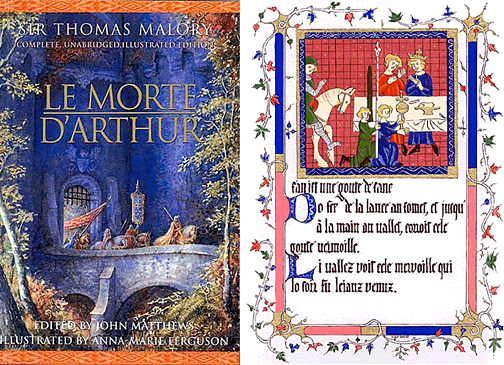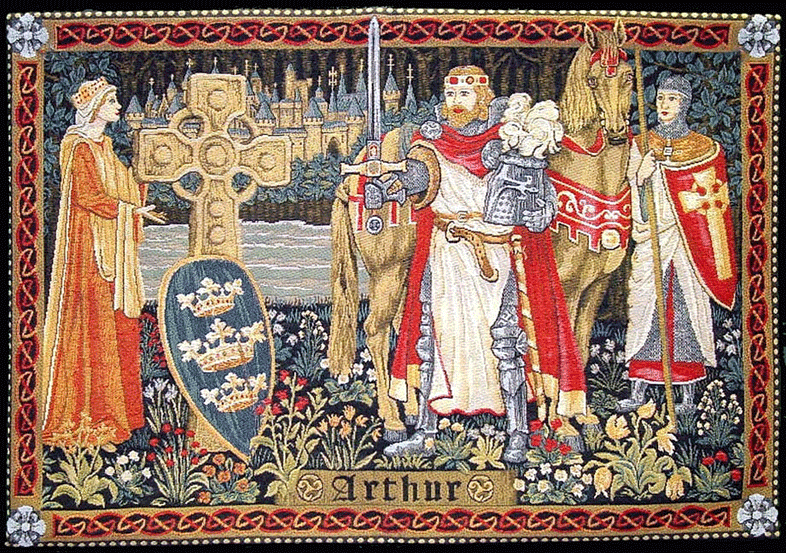|
 But
telling the story of King Arthur as we know it today falls to Sir Thomas
Malory. In his Le Morte d'Arthur, The Death of Arthur, printed in 1485, he
retold many of the tales that had first been circulated by word of mouth and
were then written down. But he dressed Arthur in the fashions of his own
times, transforming him into a 15th-century hero. As Homer was to Odysseus,
so was Sir Thomas Malory to Arthur. But
telling the story of King Arthur as we know it today falls to Sir Thomas
Malory. In his Le Morte d'Arthur, The Death of Arthur, printed in 1485, he
retold many of the tales that had first been circulated by word of mouth and
were then written down. But he dressed Arthur in the fashions of his own
times, transforming him into a 15th-century hero. As Homer was to Odysseus,
so was Sir Thomas Malory to Arthur.
Malory's text transports the reader to a dreamland of castles and kingdoms,
in which the love of adventure and glory were reason enough to wage battles.
Though these adventures are as real as a boy's dream, they're as difficult
to place in the latitude and longitude of today's world.
Le Morte d'Arthur opens with Arthur conceived as the illegitimate son of
Uther Pendragon, the Head Dragon or King of the Britains. After being raised
in secret, Arthur proves himself king by drawing the sword, Excalibur, from
a stone. He marries Guinevere, founds the Knights of the Round Table at
Camelot and begets a son, Mordred, in unknowing incest. Following 12 years
of prosperity, Arthur's knights commence a quest to discover the Holy Grail,
during which time Lancelot, his chief knight, consummates an adulterous
affair with Queen Guinevere. Ultimately, the couple is discovered and Arthur
pursues Lancelot into France, leaving Mordred behind as regent. At the end
of the story, Arthur discovers an attempt by Mordred to seize the throne and
returns to quash the rebellion. In a final battle, Mordred dies and Arthur
receives a mortal wound, after which he's transported on a barge to the Vale
of Avalon. Following the battle, Arthur's sword Excalibur is reluctantly
cast to the Lady of the Lake by Sir Bedivere, while both Lancelot and
Guinevere enter holy orders and live out their lives in peace.

This, in essence, is the famous tale of King Arthur and the Knights of the
Round Table as most people know it. But Arthur is more than simply an
inspiration for book, stage and film. The British Isles abound with the
wealth of the Arthurian legend. In every part of the land, the great king
lives on in folklore. In fact, King Arthur figures into more legends
attached to ancient sites in England than any other character.
Next:
Arthurian Sites
|
